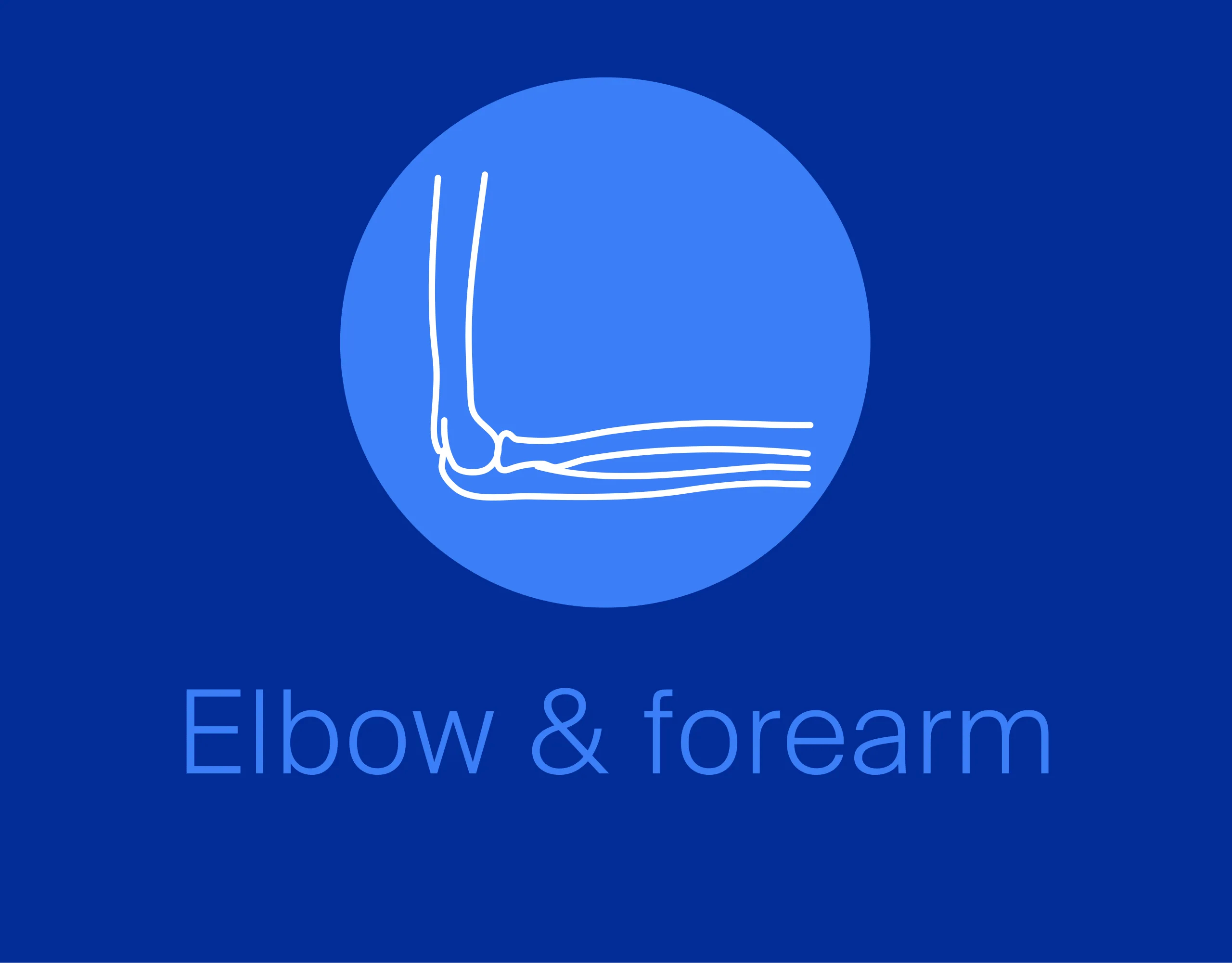ORIF - Lag screw fixation
1. Introduction
Most isolated acromial factures can be managed non-operatively.
However, typically most acromial fractures are associated with more complex fractures of the scapula, and/or clavicle, and may also involve the suspensory ligament complex.
Any disruption of the ligament complex is treated as described in the section of LSSS.
Most of the acromion is cancellous bone and provides poor fixation for screws.
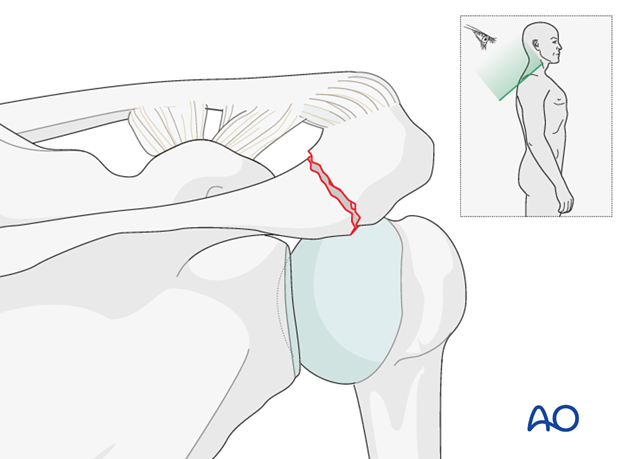
Lag Screw
Lag screws are used to achieve compression and can be used alone or in combination.
The following screws are useful:
- Conventional 3.5 screws
- Cancellous 4.0 screws (partial or fully threaded)
- Cannulated cortical 3.5 screws
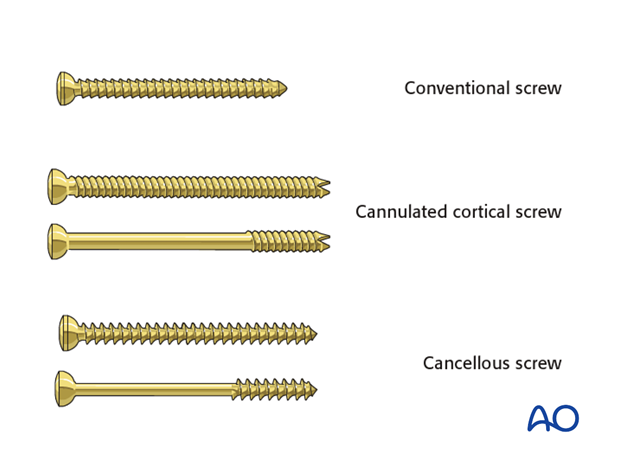
2. Patient preparation
Depending on the approach, this procedure may be performed with the patient in a beach chair position or lateral position.
3. Approach
For simple fractures of the acromion, a superior approach, ie a superior scapular approach or a sabercut approach, is recommended.
For associated complex injuries requiring an anterior approach, the sabercut approach may be extended into the deltopectoral approach (eg, coracoid, glenoid, proximal humerus fractures).
4. Reduction and fixation
Reduction
Reduction is best achieved using a reduction clamp.
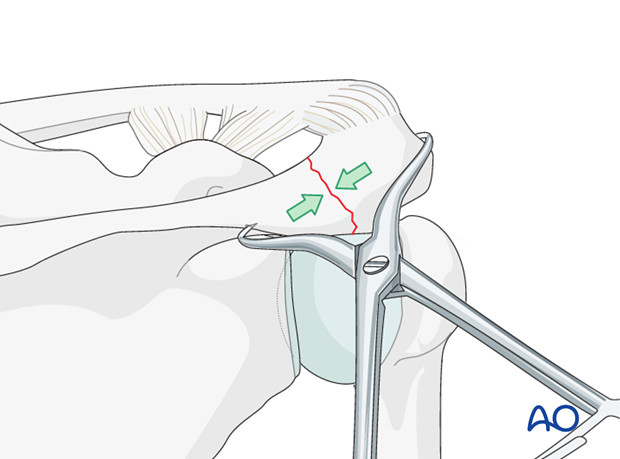
Guide wire insertion/Temporary fixation
At least two screws should be inserted to fix the fracture. These screws should be positioned parallel to each other to optimize the compression.
Insert the first guide wire at the desired cannulated screw positions. The second guide wire is inserted with the use of the parallel drill guide. The positions of the wires are checked with image intensifier to make certain that they are in bone and did not exit subacromially and enter the rotator cuff, the supraspinous fossa or the shoulder joint.
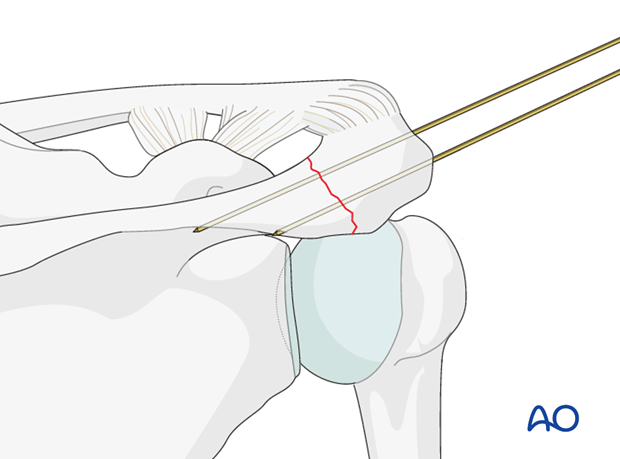
Cannulated screw insertion
Use the 3.5 mm fully treaded cannulated screws of correct length and insert them as lag screws over their respective guide wires. This requires that you predrill the acromion to create two gliding holes before you insert the screws. Washers may be used under the screw head in osteoporotic bone.
Remove the guide wires.
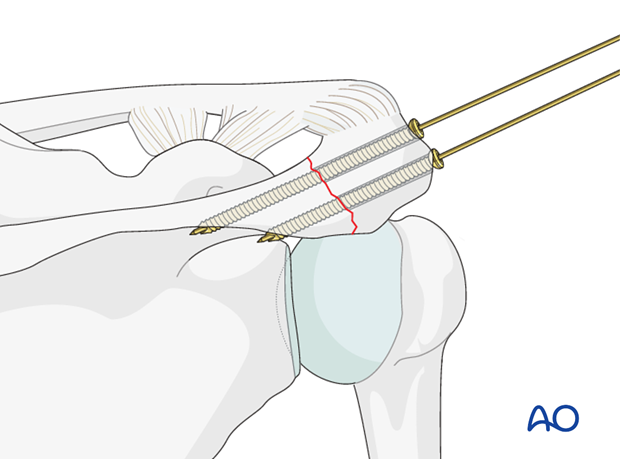
Since the superior cortex of the acromion is under tension, one can supplement the fixation by the insertion of wire through the two cannulated screws. If these are then crossed, and tied under tension they act as tension bands.
A loop is made in the middle of the wire passing from the tip of screw A to the head of screw B to allow for later symmetrical tightening.
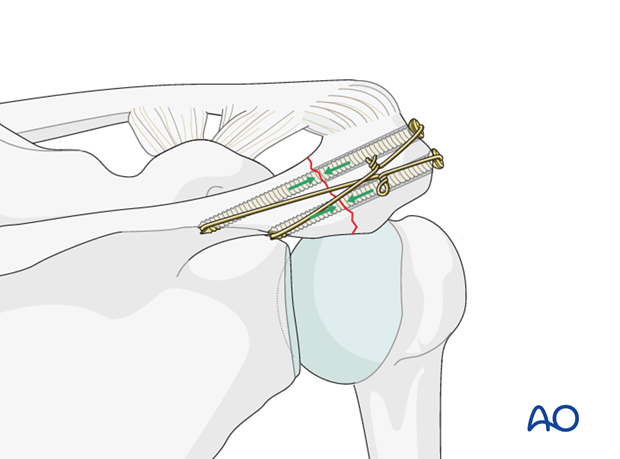
Check the reduction and fixation with an image intensifier.
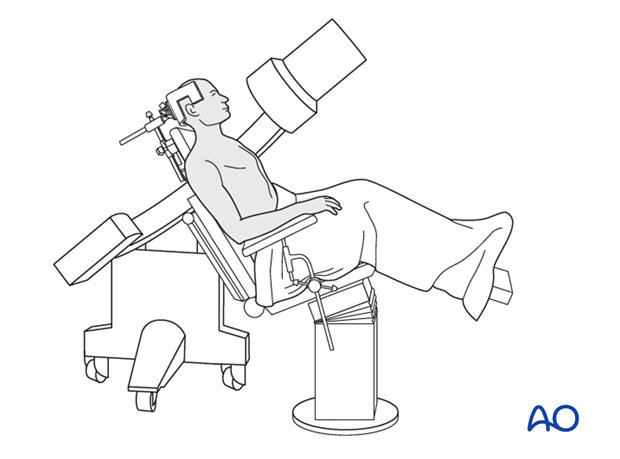
5. Aftercare
The aftercare can be divided into 4 phases:
- Inflammatory phase (week 1–3)
- Early repair phase (week 4–6)
- Late repair and early tissue remodeling phase (week 7–12)
- Remodeling and reintegration phase (week 13 onwards)
Full details on each phase can be found here.
